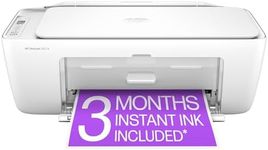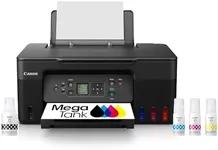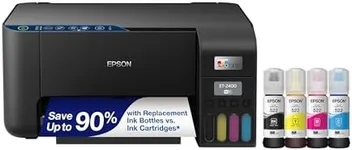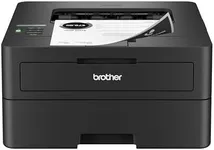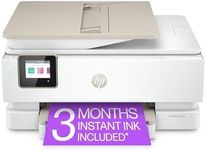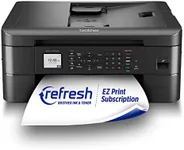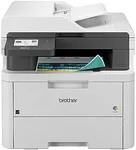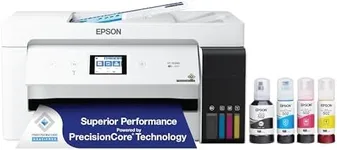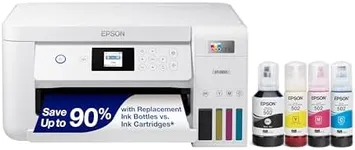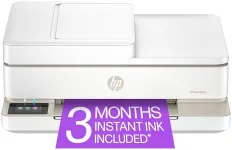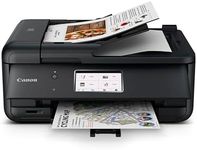Buying Guide for the Best Air Printers
Choosing the right air printer can significantly enhance your printing experience, especially if you frequently print from wireless devices like smartphones, tablets, or laptops. Air printers, also known as wireless printers, allow you to print without the need for cables, making them convenient and versatile. To find the best air printer for your needs, it's important to understand the key specifications and how they align with your specific requirements.Print Quality (DPI)Print quality is measured in DPI (dots per inch), which indicates how detailed and sharp the printed images and text will be. Higher DPI values mean better print quality. For general home use, a DPI of 600x600 is usually sufficient. If you need to print high-quality photos or detailed graphics, look for a printer with a DPI of 1200x1200 or higher. Consider what you will be printing most often to determine the appropriate DPI for your needs.
Print Speed (PPM)Print speed is measured in PPM (pages per minute) and indicates how quickly a printer can produce documents. This is important if you need to print large volumes of documents regularly. For occasional home use, a speed of 10-20 PPM is generally adequate. For office use or frequent printing, look for a printer with a speed of 20-30 PPM or higher. Assess your typical printing volume to choose a printer with a suitable print speed.
Connectivity OptionsConnectivity options determine how you can connect your devices to the printer. Common options include Wi-Fi, Bluetooth, and USB. Wi-Fi is essential for air printing, allowing you to print from any device on the same network. Bluetooth is useful for direct printing from nearby devices. Some printers also offer mobile printing apps for added convenience. Consider the devices you will be printing from and ensure the printer supports the necessary connectivity options.
Paper HandlingPaper handling refers to the types and sizes of paper a printer can accommodate, as well as the capacity of its paper trays. If you print a variety of documents, including envelopes, labels, or photo paper, ensure the printer supports these media types. For home use, a standard tray capacity of 100-150 sheets is usually sufficient. For office use, look for a printer with a larger capacity or multiple trays to reduce the need for frequent refilling. Think about the types of documents you print and choose a printer that can handle them efficiently.
Ink or Toner Cost and YieldThe cost and yield of ink or toner cartridges can significantly impact the overall cost of owning a printer. Yield refers to the number of pages a cartridge can print before needing replacement. High-yield cartridges may have a higher upfront cost but can be more economical in the long run. Research the cost and yield of replacement cartridges for the printers you are considering. If you print frequently, look for a printer with affordable, high-yield cartridges to keep ongoing costs manageable.
Duplex PrintingDuplex printing allows a printer to print on both sides of a sheet of paper automatically. This feature can save paper and reduce printing costs. It's particularly useful for printing double-sided documents like reports or booklets. If you frequently print multi-page documents, a printer with automatic duplex printing can be a valuable feature. For occasional use, manual duplex printing (where you manually flip the paper) may be sufficient.
Size and DesignThe size and design of a printer can affect where you can place it and how it fits into your workspace. Compact printers are ideal for small spaces or home offices, while larger models may offer more features but require more room. Consider the available space in your home or office and choose a printer that fits comfortably without compromising on the features you need. A well-designed printer can also enhance the aesthetics of your workspace.
